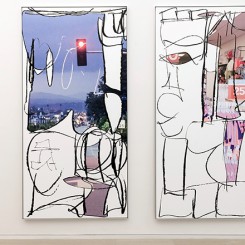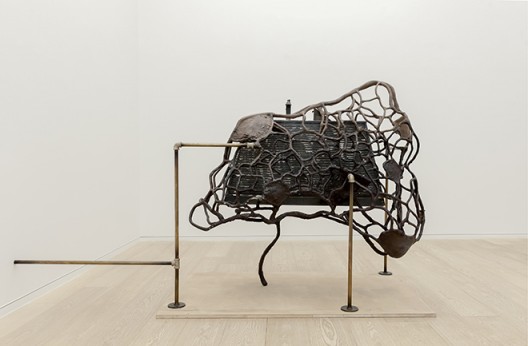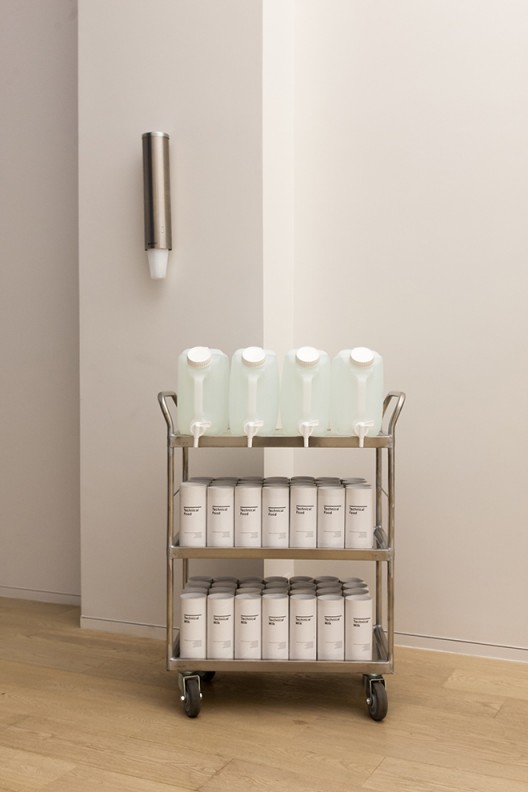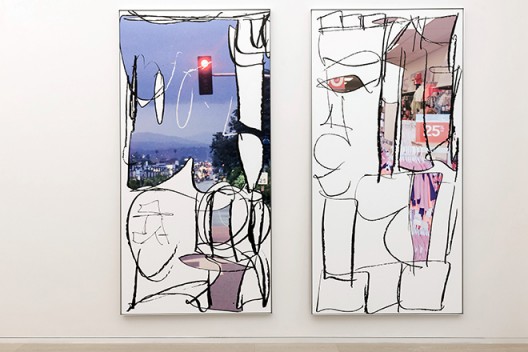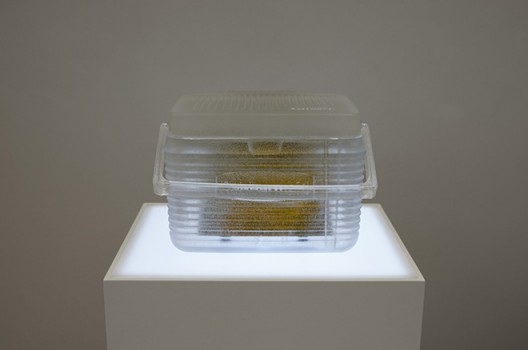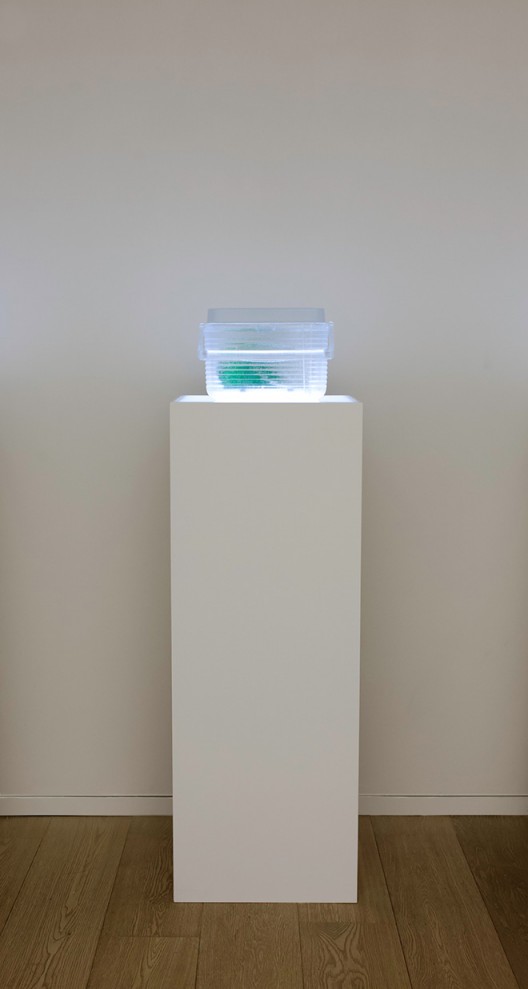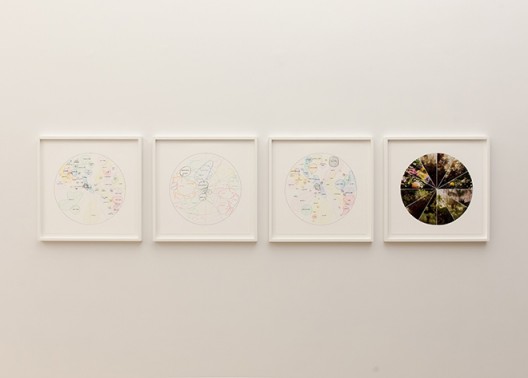Franklin Melendez, a writer and independent curator based in the San Francisco Bay area, is the creative director behind Simon Lee Hong Kong’s recent group show “1000 Islands”. Impressed by the thematic cohesion despite a diversity of subject matter achieved in this exhibit, I turned to Melendez to learn more about his curatorial process.
How did Charles Darwin’s discoveries regarding mutable finches come to serve as the inspiration for “1,000 Islands”?
I had been thinking a lot about adaptability. It’s such an important question both artistically and politically—for instance, artists are adapting to new technologies, new ways of making work, and new conditions for exhibiting—essentially new ways of looking. Simultaneously, we’re adapting to new social formations: climate change, genetically altered food, etc. These are not necessarily negative things, just the issues that are defining our current moment; they are molding and shaping our habitat, our ecosystem. That’s how Darwin first came into the equation—through these ideas of adaptation and survival. The artists in the exhibition are adapting to our contemporary environment—using the materials they have on hand, seeking to transform or recast them in a new light. This is very poetic, but also critical because they question any simple narrative of “evolution” or “progress.” Hong Kong provided the perfect setting to mediate on these issues, as its history as a port city and a global trade center has produced a highly specialized environment. My hope was that the works in the show would speak to this, and that they would activate each other in unexpected ways.
As the curator, you are both dealing with a thematic ecosystem and physically creating a high-level “ecosystem” within the gallery setting. Where do you see your role among the “collaborative entanglement” of artists, the physical space of the gallery, the individual viewer and the public at large?
I guess I always see myself first and foremost as a facilitator. When organizing an exhibition, it is very important to me that the ideas are legible and engaging across a wide range of audiences, from the artists involved to the gallery that is hosting to the general public who might not have as high a degree of specialized knowledge. It’s a tricky balance, to be sure—sometimes you achieve it and sometimes you don’t, but I think it is important to always keep this in mind as a horizon. I always think of any project as collaborative—I’m collaborating with the gallerists, the artists, my research, and other curators who I ask for feedback. I think a successful exhibition always occasions a conversation, and the most interesting conversations always have multiple voices and points of view.
The organic, ecosystem theme is perhaps most literally accessible in Pierre Huyghe’s ”La Saison Des Fetes”, a work based on his self-created biosphere of sorts in which several different species of plants, particularly those associated with holidays—roses, pumpkins, Christmas trees—were planted in triangular slices of circles and subsequently mapped. What led you to choose this artist and this piece, and what was behind your decision to place it at the entryway to the exhibit for viewers to see first?
I think your question already captures much of my reasoning. I love the way Pierre is subtly examining how this varied plant life has been acculturated and been given different meanings in the social world. For instance, fir tree = Christmas; pumpkin = Halloween, etc. It says a lot about how the natural is always being processed and re-imagined by the cultural world, and it makes it impossible to make any distinctions between nature and culture. I also think that Pierre is a very important touchstone for the artists in the exhibition. I think he has pioneered a way of conceptualizing and implementing exhibitions that has fundamentally alternated how we approach them. His polymorphous use of materials and media, his integration of organic matter—these have paved the way for a younger generation. I thought it was important to acknowledge the connection and also provide a template for the exhibition as a whole, which is why his was the initial piece.
Hong Kong is a city filled with migrant workers, many of whom are Indonesian and Filipino. The list of materials Josh Kline used in his series of sculptures, each of which features an IV-bag filled with a household liquid (detergent, mazola oil, and floor cleaner) include powdered Indonesian rupiah and powdered Filipino pesos. The titles also invoke the plight of the worker: ”Essence of Bitter Melon”, “Sleeping Under the Kitchen Table”, and ”Drudgery Displacement”. Are these works in any way site-specific, or did you choose them with the environment of Hong Kong in mind? Do you see these objects as a method of cultural advocacy or criticism of the domestic worker society, or as merely a reflection of the reality of the world as it is?
These pieces are 100% site-specific. The liquids in the coolers are always mixed in relationship to the site, and that is one of the reasons we thought it very important that Josh come to install the works personally (and we remain grateful to Simon Lee for valuing the importance of that gesture). During the first day of installation, Josh spent the day with a Filipino domestic worker and went shopping with her for the sorts of normal things she would shop for on a regular basis: floor cleaner, laundry detergent, oil. He mixed these with pesos and remittance slips to create solutions that are suspensions of these various traces of political histories. The works were made in Hong Kong and are specifically about Hong Kong—so there is definitely an important political dimension to them. They reflect contemporary society, and in doing so raise questions about its structure and impact; but I also think Josh is aware that we are participants in that structure—so it makes any stance quite complicated and ambiguous.
Some of the pieces make reference to the human body interacting with the chemical landscape of the modern world. For example, Dora Budor’s use of infected silicone prosthetics overlaying a model-sized rooftop in ”If You Find This World Bad, You Should See Some of the Others”. Within the Darwinian motif, it is hard not to think of the Origin of Species and its impact on our self-awareness as an evolving and adapting species. What direction is this exhibit ultimately pointing man toward in his relationship with a modern, technological and environmentally hazardous world?
I think the idea of mutation is definitely an important undercurrent in the show, and Dora’s work beautifully illustrates this. Mutation is, after all, the ultimate form of adaptation. This can have sci-fi implications (think of X-Men), but it can also mean something as simple as our taste buds mutating to accept and enjoy new chemically enhanced flavors (like a soft drink, for instance). Mutation can be a very poetic and beautiful thing as well. I think Dora embraces all of these possibilities–acknowledging the science fiction/dystopic aspect while also creating a beautiful balance—recycling these discarded film props to create something strange but also graceful and evocative—a new life form perhaps, a new consciousness. I am not sure there is an ultimate decision in terms of where this is heading—for me, and I think also for the artist, it is more about raising questions.
I found the ecosystem reference most subtle in Pamela Rosenkranz’s video ”Living Colors”. In it, blocks of solid color are projected on the wall accompanied by a voice saying “yes” or “no” in varying tones. How does this piece relate to the theme of ”1000 Islands”, and why did you choose to place it physically as the last work in the exhibition?
The work is quite interesting because it is essentially produced by a body. A performer was asked to repeat those works (yes and no) continuously and was wired to a machine that recorded their different neurological impulses. These brainwaves were translated into frequencies which can be visualized as colors. Thus, the piece is simply a body emitting different charges of energy. I like that it is both very abstract and incredibly concrete. It’s almost as if we are glimpsing the beginning of a new type of body—a highly evolved, technologically enhanced body; but at the same time, we’re just experiencing our current body, but in a different way. I also like the play between the “yes” and “no”—it’s ambiguous and unresolved, positive and negative, which was something that we wanted. Rather than seek closure, we wanted to entertain multiple possibilities.

